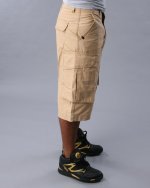lilcrazy2
Well-known member

Here is an old post by Henry Link dealing primarily with DOF, but his answer in #3 certainly lends some creedence to why some might see a better view with the larger binos.
Originally posted by Henry Link
What factors affect DOF in binos?
This is a good question . It can be used to explain a number of odd things we see in bins. First of all’ different people actually don’t see the same amount of DOF in the same bin.Young people with good eyesight have greater focus accomodation than older people who need reading glasses. They will see greater DOF in any binocular (and less field curvature), so while measurements could be done ,and would be valid in comparing one bin to another they would not predict the actual DOF for an individual.
A second factor is magnification. Simply put, if every thing else is equal lower magnification bins have more DOF.
A third factor (and the most interesting one) is “effective” focal ratio which varies with different lighting conditions. The focal ratios of the objectives of most hand held binoculars fall between F:3.5 and F:4. For the moment just assume all binoculars are F:4 no matter what the objective size. An 8x25 has an F:4 objective with a focal length of 100mm, an 8x50 has an F:4 objective with a focal length of 200mm. Assume these two binoculars are being used in daylight conditions so that the pupil size of the eye is closed down to 3.125mm, exactly the same as the exit pupil of the 8x25. That means the entire 25mm of that bin’s objective is being used, but only the central 25mm of the 8x50’s objective.The “effective” focal ratio of the 8x25 in this situation remains F:4 since the entire objective diameter is being used, but the “effective” focal ratio of the 8x50 becomes F:8 (the 200mm focal length divided by the 25mm central part of the objective actually being utilized). Not only does this effectvely higher f-ratio in daylight increase DOF compared to the smaller bin, but it also reduces the visible effects of chromatic and spherical aberrations.






